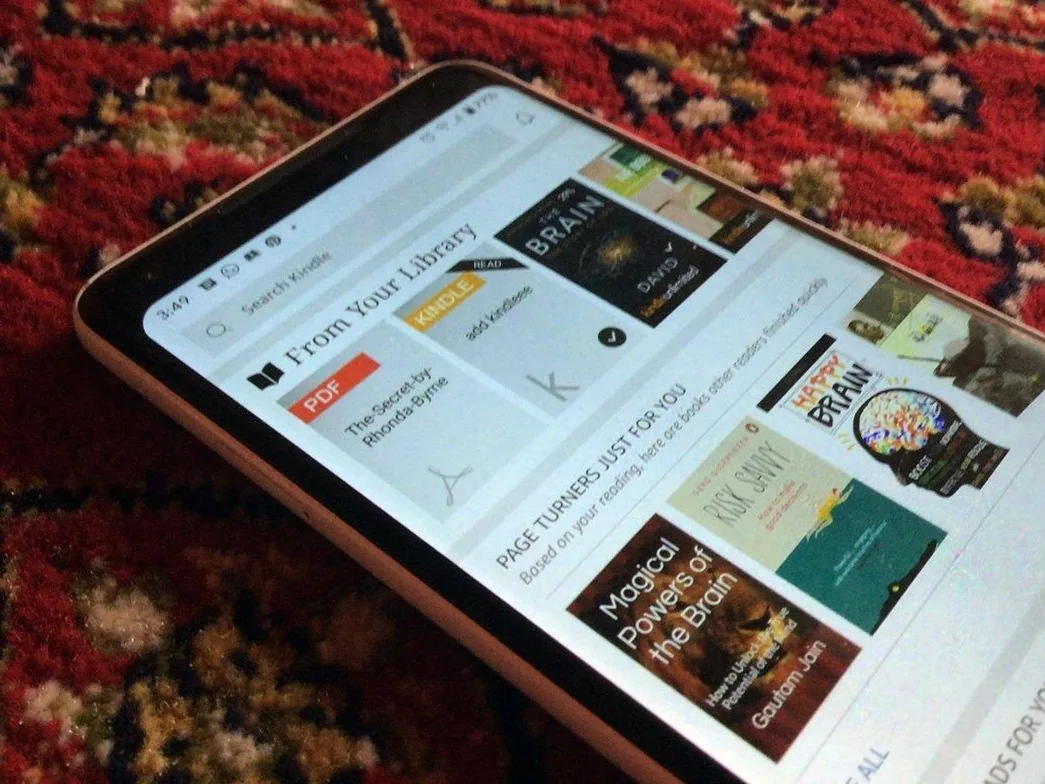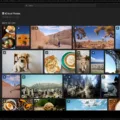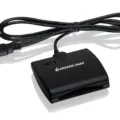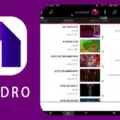EPUB is a widely used file format for e-books that offers a flexible and user-friendly reading experience. If you’re an avid reader and use the Kindle app on your Android device, you might be wondering how to add EPUB files to your Kindle library. In this article, we will guide you through the process step by step.
There are a few different methods you can use to add EPUB files to your Kindle app on Android. One of the easiest ways is to use the Send to Kindle service provided by Amazon. This service allows you to send EPUB files to your Kindle library, where you can then access them on your Android device.
To get started, you’ll first need to find your unique Kindle email address. This address is associated with your Kindle account and allows you to send files directly to your Kindle library. To find your Kindle email address, open the Kindle app on your Android device and go to the “Library” section. From there, tap on the three-dot menu icon and select “Settings.” Scroll down until you see the “Send-to-Kindle Email” section, and note down the email address listed there.
Once you have your Kindle email address, you can send EPUB files as attachments to that address via email. Simply compose a new email on your device and attach the EPUB file you want to add to your Kindle library. Make sure to include your Kindle email address in the “To” field. Once you’ve sent the email, the EPUB file will be delivered to your Kindle library.
Alternatively, you can also upload EPUB files to your Kindle library by connecting your Android device to your computer via USB. After connecting the device, you can access its internal storage and locate the “Books” folder. Simply drag and drop the EPUB file into this folder, and it will be added to your Kindle library.
Once the EPUB file is added to your Kindle library, it will automatically sync with your Kindle app on Android. To access the file, open the Kindle app and go to the “Library” section. You will find the EPUB file listed alongside your other Kindle books. Tap on the cover to start reading.
By following these simple steps, you can easily add EPUB files to your Kindle app on Android and enjoy a wide range of e-books in the EPUB format. Whether you prefer to use the Send to Kindle service or transfer files via USB, you can expand your reading options and enjoy a seamless reading experience on your Android device.

How Do You Put Books on Your Kindle App Android?
To download books to your Kindle app on Android, follow these step-by-step instructions:
1. Open the Kindle app on your Android device.
2. Tap on the “Library” icon, usually located at the bottom of the screen. This will take you to your Kindle library.
3. In your library, you will find a list of all the books you have purchased or downloaded. To download a new book, tap on the “Store” icon, usually located at the top-right corner of the screen. This will take you to the Kindle Store.
4. In the Kindle Store, you can browse through various categories or search for a specific book by using the search bar at the top of the screen. Once you find a book you want to download, tap on its cover to view more details.
5. On the book’s details page, you will see a button that says “Buy” or “Get” if it’s a free book. Tap on this button to initiate the download. If prompted, sign in to your Amazon account to complete the purchase or download.
6. A progress bar will appear, indicating the download status. Once the download is complete, the book will be available in your Kindle library.
7. To access the downloaded book, go back to your Kindle library by tapping on the “Library” icon. You will see the newly downloaded book listed along with your other books.
8. Tap on the cover of the book to open and start reading it.
Please note that you need an active internet connection to download books to your Kindle app. Also, make sure you are signed in to the same Amazon account that you used to purchase or download the book.
Can Kindle App Support EPUB?
The Kindle app does not directly support EPUB files. The Kindle app is designed to read books in Amazon’s proprietary formats, such as MOBI and AZW. EPUB is a different file format commonly used by other e-book platforms.
However, there is a way to read EPUB files on a Kindle device or app. You can use Amazon’s “Send to Kindle” service, which allows you to send EPUB files to your Kindle account and access them on your Kindle device or app. To do this, you need to convert the EPUB file to a compatible format, such as MOBI or AZW, before sending it through the service.
Here are the steps to send EPUB files to your Kindle using the “Send to Kindle” service:
1. Convert the EPUB file to MOBI or AZW format: You can use free online conversion tools like Calibre or ebook.online-convert.com to convert the EPUB file to a Kindle-compatible format.
2. Once the EPUB file is converted, go to the Amazon website (www.amazon.com) and log in to your Amazon account.
3. In the top-right corner, hover over “Account & Lists” and select “Manage Your Content and Devices” from the dropdown menu.
4. Click on the “Preferences” tab at the top of the page.
5. Scroll down to the “Personal Document Settings” section and find your Kindle device or app in the list.
6. Click on the “Edit” button next to your device or app.
7. Under the “Approved Personal Document E-mail List” section, make a note of the email address associated with your device or app.
8. Scroll down to the “Send-to-Kindle E-mail Settings” section and click on the “Add a new approved email address” link.
9. Enter the email address you want to use to send the converted EPUB files to your Kindle and click “Add Address”.
10. Now, compose an email from your approved email address and attach the converted MOBI or AZW file to the email.
11. In the email subject line, type “convert” to have Amazon convert the file to Kindle format. If you don’t want Amazon to convert the file, you can leave the subject line blank.
12. Send the email.
13. Open the Kindle app on your device or open your Kindle e-reader and connect it to the internet.
14. Sync your Kindle app or e-reader, and the converted EPUB file should appear in your library.
By following these steps, you can read EPUB files on your Kindle device or app using the “Send to Kindle” service.
How Do You Transfer Books From Your Android to Your Kindle?
Method 1: Using Email (Android, iPhone, iPad, Windows, Mac)
Step 1: Find Kindle Email
– Open the Kindle app on your Android device.
– Tap on the three horizontal lines in the top-left corner to open the menu.
– Select “Settings” from the menu.
– On the Settings page, you will find your Kindle email address listed under “Send-to-Kindle Email.”
Step 2: Send Ebook as an Email
– Open your email application on your Android device or computer.
– Compose a new email.
– Enter your Kindle email address as the recipient.
– Attach the ebook file you want to transfer to the email.
– Add a subject to the email (optional).
– Send the email.
Step 3: View in Kindle
– Open your Kindle device or app.
– Connect your Kindle device to the internet.
– The ebook you sent via email should automatically sync and appear in your Kindle library.
– If it doesn’t appear, manually sync your Kindle device or app by tapping the sync button or selecting the “Sync” option from the menu.
Note: Make sure the ebook file format is supported by Kindle. Kindle supports formats such as MOBI, AZW, and PDF. If the ebook is in a different format, you may need to convert it using a compatible file converter before sending it via email.
Method 2: Using USB Cable (Android Only)
Step 1: Connect Kindle to Computer
– Connect your Kindle device to your computer using a USB cable.
– On your Kindle device, swipe down from the top of the screen to access the notification panel.
– Tap on the USB connection notification.
– Select “Transfer files” or “File Transfer” from the USB connection options.
Step 2: Copy Ebook to Kindle
– Open the file explorer on your computer.
– Locate the ebook file you want to transfer.
– Copy the ebook file.
– Paste the ebook file into the “Books” or “Documents” folder on your Kindle device.
Step 3: Eject Kindle from Computer
– Safely eject your Kindle device from your computer.
– On your Kindle device, swipe down from the top of the screen to access the notification panel.
– Tap on the “Disconnect” or “Eject” option.
Step 4: View in Kindle
– Open your Kindle device or app.
– The ebook you transferred should appear in your Kindle library.
Note: This method is only applicable for Android devices. iPhones and iPads do not have USB storage access, so this method cannot be used on those devices.
How to Install EPUB on Android?
To install EPUB files on Android, you can follow these steps:
1. Download an EPUB reader app from the Google Play Store. Some popular options include Google Play Books, Aldiko Book Reader, and FBReader.
2. Once the app is installed, open it and grant any necessary permissions.
3. Download the EPUB file you want to read onto your Android device. You can do this by downloading the file from a website or transferring it from your computer.
4. Open your preferred file manager app and navigate to the location where the EPUB file is saved.
5. Tap on the EPUB file to open it. If prompted, select the EPUB reader app you installed in step 1 as the default app to open EPUB files.
6. The EPUB reader app will then open the file and display its contents. You can navigate through the book using the app’s provided controls, such as swiping or tapping to turn pages.
That’s it! You have successfully installed and opened an EPUB file on your Android device. Enjoy reading!
Conclusion
EPUB is a widely used file format for ebooks that offers a range of advantages. It provides a flexible and customizable reading experience, allowing readers to adjust font sizes, styles, and layouts according to their preferences. EPUB files are also compatible with a variety of devices and platforms, making it easy to access and read ebooks on different devices such as smartphones, tablets, and e-readers.
EPUB files are lightweight and compact, making them easy to download and store on devices with limited storage capacity. Additionally, EPUB supports interactive features such as hyperlinks, multimedia content, and annotations, enhancing the reading experience and enabling readers to engage with the content in a more dynamic way.
One of the key benefits of EPUB is its ability to reflow text, which means that the content can adapt to different screen sizes and orientations. This ensures that readers can comfortably read ebooks on various devices, regardless of the screen size or orientation.
EPUB files are also easily convertible to other formats, such as PDF, making it convenient for readers to switch between different file formats based on their preferences. Furthermore, EPUB supports DRM (Digital Rights Management), which allows publishers to protect their copyrighted content and prevent unauthorized distribution.
EPUB is a versatile and user-friendly file format that offers a rich reading experience with its flexibility, compatibility, and interactive features. Whether you’re a book lover or a publisher, EPUB provides an efficient and enjoyable way to create, distribute, and consume digital content.








